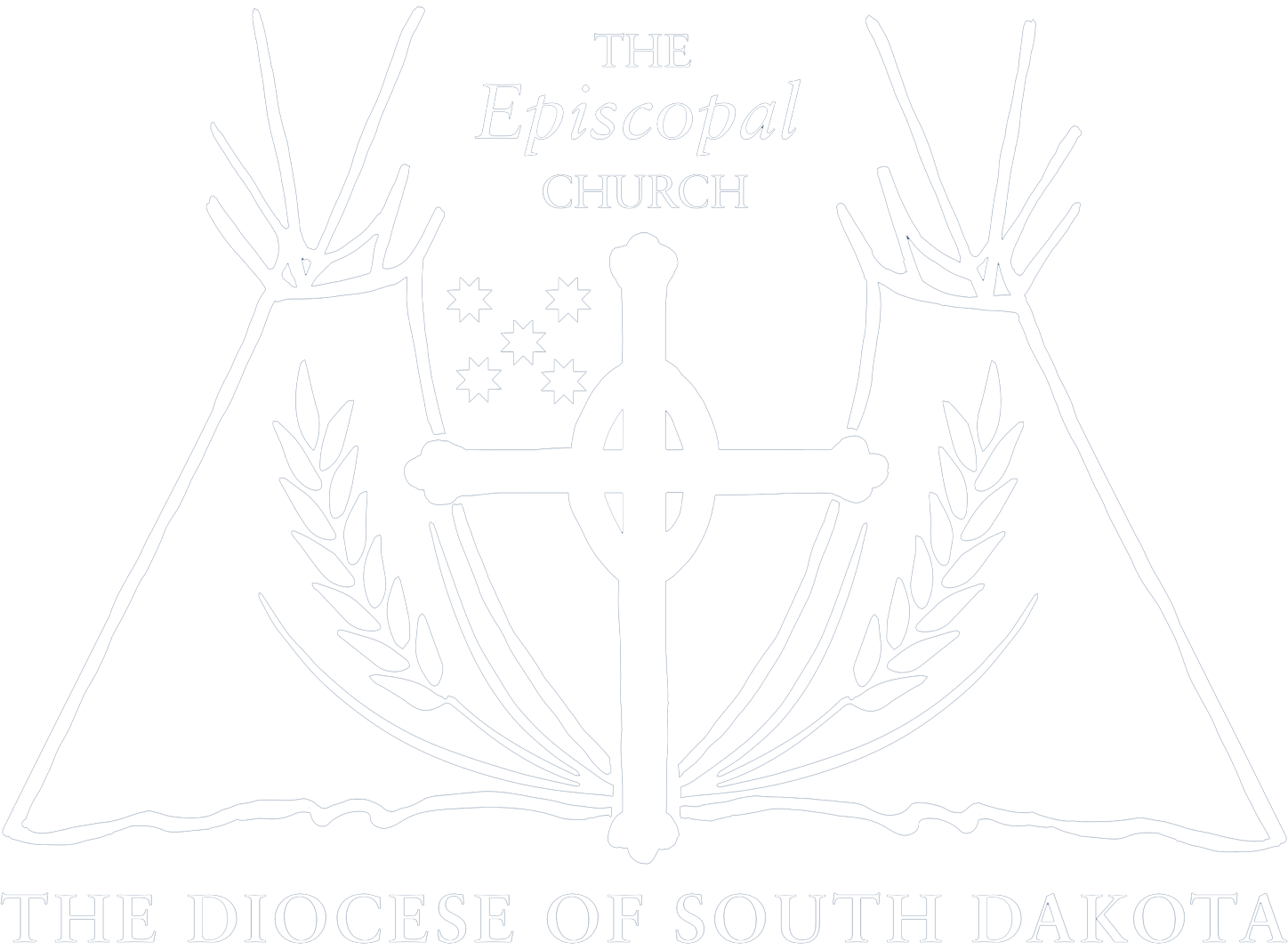
Common Ground, Shared Roots 'keeps the soul alive'
Nestled under the accumulating snow from a mid-December South Dakota blizzard, prairie grass seeds and wildflower seeds bide their time, waiting for the right moment — perhaps this spring and summer, perhaps next — to burst forth.
“These plants have crazy long root systems,” according to Mia Werger, who works for the Ecdysis Foundation in Brookings, S.D., and whose senior thesis at Augustana University focused on restoring the prairie. “The root system does 90 percent of the work, because the roots are 10, 12, 15 feet beneath your feet.”
Before growing into the prairie grasses and wildflowers, the seeds actually wait for the right moment, Werger explains, depending on whether there is enough water in the soil to enable the plants to grow and thrive. Sometimes, she says, it can take two years before they burst forth.
The grasses pull carbon from the air through their deep roots and store it back into the earth, creating what is called a carbon sink. “If carbon is in the earth,” she says, “it’s not in the air, which keeps temperatures down.
“Restoring the prairie keeps the soul alive — it lets in air and water and insects and microorganisms,” she says. “We need these plants to renew the earth. Deeper roots equals health and build healthy soil.”

“What I love about this project,” he adds, “is that it offers anyone who owns even a small amount of land in the Midwest an opportunity to do something that actually takes carbon out of the air and puts it back in the ground. The benefits of restoring wild grassland plant species go beyond carbon sequestration, too. These kinds of grasses are more resilient to both drought and flood, and provide food for birds and insects.
“This project,” he says, “is all about bringing people together on this land that we occupy together, and in so doing, healing pieces of land and thereby ourselves. … ‘Common Ground, Shared Roots' invites all Episcopalians in our diocese and beyond to dream bigger. By simply following a few steps, and then planting certain seeds, even a small plot of land can become a sink that literally reverses climate change, while also giving animals habitat and food, and keeping more rainwater in the ground for the driest months of the year.”
Werger developed the initial program on which “Common Ground, Shared Roots” is based, Honan says. The diocesan team expanded her program and changed it so that it is now “a model for connecting across cultures on the common ground.”
An important component of the initiative is learning about the land itself and its history.“Bringing everyone together into one area to talk about the land and what it meant to Native people (is) where the idea of story-telling came in,” Hawk says. “Then Mitch knew about (Werger), who could talk about the grasslands. It’s called regenerative agriculture — restoring the lands back and bringing back the former grasses that used to grow on the prairie. … We really didn’t know what to expect until the first meeting. When we did the first presentation on the Rosebud, it all seemed to work out.”
“I am excited to be able to do this,” she adds. “We never had all the input that we needed. We have the space, and we are gardeners, and we want to get back into taking care of Mother Earth. This sounds like a wonderful idea.”
Robin Bowen, a member of St. James, Enemy Swim, was impressed with the presentation on the Lake Traverse Reservation, which took place in October.
“This is our way to respect life, and to remember that everything has life,” she says. “Respect Mother Earth, respect the land, respect the animals … and you don’t do that by putting chemicals into it. We need to bring back the natural grasses and the trees, and they take care of the air, and it’s a circle … a circle of life that was fine before we got here.
“If we lose the animals and the fish and the water and air, the planet will die,” Bowen points out. “If we lose humanity, the planet will survive and probably flourish.”John Eagle, a Native elder from Sisseton, was one of the presenters in Enemy Swim, telling the story of the land. “He was able to give a history of it,” Bowen says, “and was a really good speaker.”
Bowen’s husband, Smokey, believes that “going back to the natural prairie grass that used to be here before, I think, is kind of God’s will! Why are we trying to fix something that isn’t broke? Go back to the natural way."
He adds, “When Jesus says to love thy neighbor as you love yourself, the whole creation is our neighbor. It’s not just who you can talk to and see as a human being, but the whole creation.”
Robin Bowen was impressed by the presentation. “I thought that Mitch was very informative about what we needed to do, and took us through the steps from the beginning of the summer … and made sure I had everything I needed. He was right there every time I had a question. He provided me with everything I needed to do this.”
Werger, she says, “was very informative, she knew what she was talking about, and able to answer questions from the people,” who came from Sioux Falls, Watertown, Mobridge, and Aberdeen to participate.
Julie Gehm, Senior Warden at Calvary Cathedral, traveled from Sioux Falls to Enemy Swim for the presentation.
“I thought it was really interesting,” she says. “It was a nice combination of science and spirituality, with Mia Werger talking about the science of native grasses and the super-long roots they put down and how that is good for the environment.
“The elder that spoke, John Eagle, talked about praying when planting, asking God or the Creator for the planting to be successful for the seeds to grow,” she adds. “He also told a couple of different origin stories for the name of Enemy Swim. And then the hospitality by the St. James Congregation was … very generous.”
Gehm says that the sustainability of “Common Ground, Shared Roots” is “critical to the future of humanity. We need to be better about honoring Mother Earth, and make sure that the planet is habitable for our descendants. We owe that to God as well … that we are good stewards with God of nature.”
The Revs. Ellen and Kurt Huber, Superintending Presbyters of the Cheyenne River Episcopal Mission, say they were moved by the November presentation at St. John’s, Eagle Butte.
“The morning was filled with important conversations and deep listening,” Ellen Huber says. “Love and concern for Unci Maka (Grandmother Earth) flowed through all who gathered to learn and plant prairie grass seeds.”
“We were able to listen and learn about prairie grasses and the need for us to take action in this era of climate change,” Kurt Huber says. “Mia (Werger) was helpful in framing the grass seed and a return to native plants for churches, communities, and peoples.”
Harley L. Zephier Jr., a local Native presenter, was born in Fatih, S.D., and is Mnicoujou Lakota. He began his presentation by talking about growing up learning “about the importance of keeping our world alive, through belief and connection to Creator.”
Zephier “brought spirituality into the conversation through his participation in sun dances and living in a traditional way,” Kurt Huber says. “Each (presenter) helped us see our part on Mother Earth and a call to live in harmony with all of our relations. It felt like the Holy Spirit blew through our meeting.”
Honan has high hopes for the future of “Common Ground, Shared Roots,” because it allows so many people to participate. “I sincerely hope that the people who hear about this will be inspired to take small but powerful actions like this to protect the environment that our future depends on.”
“We literally and spiritually have planted seeds,” says Bishop Folts, “and we have faith that all these seeds will grow roots and that the roots will take. We know what to expect from the seeds that we planted in the ground. What will be really exciting to watch is to see what God will do with the seeds planted in people’s minds and hearts.”
• • •
(Story by the Rev. Dr. Lauren R. Stanley. Photos by Stanley, Ellen and Kurt Huber, and Robin Bowen.)









Top row, left to right: Warren Hawk, a member of the Diocesan Leadership Initiative who is from Standing Rock, talks about the project at St. James, Enemy Swim. Bishop Jonathan Folts chats with Native presenter Harley L. Zephier Jr. at St. John's, Eagle Butte. The Memorial Garden at St. James, Enemy Swim, is planted in memory of Senior Catechist Calvin Randell, the Rev. Deacon Vernon Cloud, the Rev. Les Campbell, and the Rev. Ron Campbell.
Middle row, left to right: Kim Folts shares seeds with Nora Huber to be planted at St. John's, Eagle Butte. A member of St. John's, Eagle Butte, scatters some seeds. The presentation at St. James, Enemy Swim.
Botton row, left to right: Bishop Jonathan addressing the group at the Bishop Hare Center in Mission. Pulling off the plastic tarp that covered the memorial garden ground at St. James, Enemy Swim. Deanna Stands from Woniya Wakan (Holy Spirit), Wagner, scatters seeds at the Bishop Hare Center in Mission.
Common Ground, Shared Roots
The Episcopal Diocese of South Dakota is happy to announce the offering of a unique program entitled Common Ground, Shared Roots that will be beginning in the late summer of 2022. The purpose of Common Ground, Shared Roots is to bring the people in our Diocese together, to experience Unci Maka, this sacred land upon which we worship God known as Grandmother Earth, and to learn how the land can care for God’s sacred people.
This program will be divided into two parts. During the first segment, we will focus on the land's history. Believing that every land has a story to tell, storytellers have been invited from each location to share one or more stories they believe the land wishes for us to hear. The second segment will focus on how the land can benefit us in the future and, to that end, a presenter from Augustana University will teach us about the benefits of prairie gardens and how they are excellent and inexpensive ways that carbon can be removed from the atmosphere. A prairie grass garden will have been started at each one of the three sites where Common Ground, Shared Roots will be offered, and participants will be taught how to plant prairie grass gardens at their churches and homes.
The Common Ground, Shared Roots Project Team
Mrs. Stephanie Bolman-Altamirano, Mni Sose Episcopal Mission
Mr. Warren Hawk, Standing Rock Episcopal Mission
Mr. Mitch Honan, Canon for Finance and Property
The Rt. Rev. Dr. Jonathan Folts, Bishop




